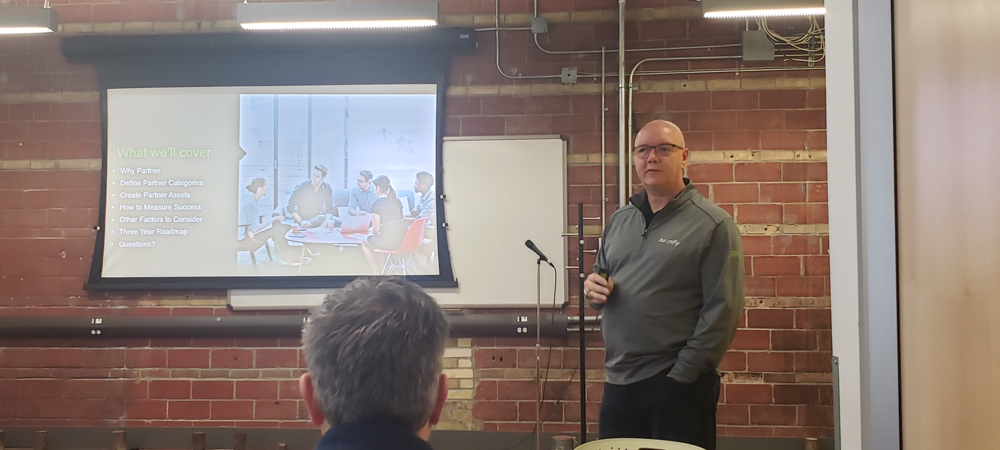In late November I was happy to help coordinate a talk by Mike Stankowitsch at the Communitech Sales Leaders P2P on creating a channel sales strategy. I have known Mike for almost 15 years through our Sales Leaders P2P. In those years Mike has worked for several local KW tech sales organizations with a number for those jobs helping to drive channel sales strategy. As one of my early sales mentors told me, it is not how, but how many that is important. I found Mike’s talk very informative and here are a few of the highlights that I took from it.
Why Partner Versus Just Go Direct?
There are many situations that make it advantageous to create a partner sales channel:
• Geographic: There may be language barriers, time frame constraints, or your solution may require services. These are all excellent reasons to use a geographic based partner.
• Industry expertise: I am a big believer in targeting verticals (https://vapartners.ca/b2b-sales-prospects/) versus a spray and pray approach. You can find partners with specific industry expertise that can help you legitimize your solution.
• Customer segmentation: On the other side of the vertical equation is the horizontal focus. You may segment your channel based on the size of the organization. A channel sales partner can help you profitably reach a certain type of customer.
• Increase sales with minimum investment: Your organization may not have a huge budget for additional sales people and the infrastructure to support them. A well planed channel sales strategy can help you expand your sales in a cost-effective way.
Types of Partners
Mike talked about the importance of creating different types of sales partnerships as well as the expectations for the partners. Mike broke down the partnerships this way:
• Referral: A partner will bring a qualified lead and stay engaged with the sale. Mike suggested that the commission for this type of sale would be 10%.
• Reseller: The partner would do a bulk of the selling and only use the solution provider in a limited way. For this type of engagement Mike suggested a 30% commission would be appropriate.
• Strategic: This could be for large consulting or tech firms. These opportunities could be large dollar value deals that would take a considerable amount of time to help close. The commission could vary depending on the opportunity and partner. These large companies will often control the relationship and your solution could be a smaller subset of a larger solution. These types of partners and opportunities could still take a large amount of your time due to the complexity.
• OEM: This is where a partner company would white label your solution and market it as their own. There may be a few small tweaks to the solution that may be needed.
Partner Framework
There needs to be a partner framework for the type of partnership and the expectations for both parties. Without setting the framework and setting the expectations you are setting your organization up for failure. Here are the frameworks and expectations needed:
• Engagement and leads: It should be spelled out what a target lead should be, and the level of engagement required will be. In some cases, your organization may be happy with a lead thrown over the wall, in other cases the partner should stay engaged. This should be spelled out by the type of partnership.
• Timelines: Mike reinforced that both leads and sales commissions should have a time period attached. You have to only pay out commission on the first year of revenue for a customer. The same goes for a lead, there should be a period of time that it is active. These issues need to be dealt with up front, so there are no issues with the partner later on and also so you don’t have liabilities for the organization.
• Requirements for the partner: There are several things that could be required from your partner including an executed contract, business plan, annual targets, training certificates, and deal registration. These can vary depending on your solution, but this list is a great place to start.
• Benefits you will provide: Your organization must also provide expectations for your partners. This could include discounts, sales enablement support, partner assets, marketing resources, software access, communications, and technical/sales support.
• Exceptions can be made: Mike also iterated that exceptions can be made. As an example, you are working on a complex deal and it takes 2 years to close versus the typical one-year set-out in the partner agreement. An exception can be made to keep working on it.
If you are in the KW region and are interested in talking sales leadership with other like minded individuals please join our Sales Leaders P2P.

